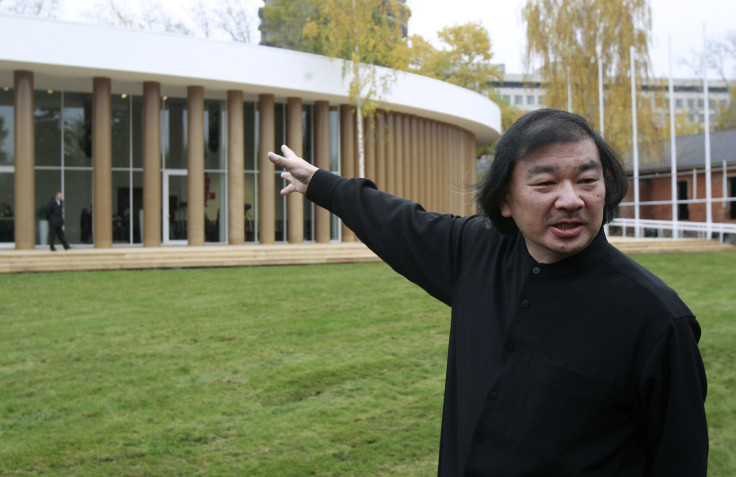Shigeru Ban, Japanese Disaster-Response Architect, Wins 2014 Pritzker Architecture Prize For His Modernist Designs And Humanitarian Work

Shigeru Ban, a Japanese disaster-response architect, who designed Christchurch’s “Cardboard Cathedral” after New Zealand’s devastating 2011 earthquake, has won the 2014 Pritzker Architecture Prize, the top award in the field and often described as the Nobel Prize for architecture.
The 56-year-old Tokyo-born architect is known for his creative use of unconventional material such as bamboo, fabric, paper and composites made of recycled paper fiber and plastics to design low-cost shelters and community buildings for disaster victims. The $100,000 prize, which will reportedly be awarded at Amsterdam's Rijksmuseum in June, has gone to a Japanese architect for the second year in a row.
“Receiving this prize is a great honor, and with it, I must be careful. I must continue to listen to the people I work for, in my private residential commissions and in my disaster relief work. I see this prize as encouragement for me to keep doing what I am doing — not to change what I am doing, but to grow,” Ban said in a statement after the announcement was made Monday.
The Pritzker Architecture Prize was created by the late Jay A. Pritzker and his wife, Cindy Pritzker, in 1979, to honor the world's most innovative architects. The award is funded by the U.S.-based Pritzker family and sponsored by the Hyatt Foundation.
Officials of the Pritzker prize wrote in a press release: “For twenty years Ban has traveled to sites of natural and man-made disasters around the world, to work with local citizens, volunteers and students, to design and construct simple, dignified, low-cost, recyclable shelters and community buildings for the disaster victims.”
Peter Palumbo, chairman of the award's jury, said in a statement: "Shigeru Ban is a force of nature, which is entirely appropriate in the light of his voluntary work for the homeless and dispossessed in areas that have been devastated by natural disasters."
"But he also ticks the several boxes for qualification to the Architectural Pantheon - a profound knowledge of his subject with a particular emphasis on cutting-edge materials and technology; total curiosity and commitment; endless innovation; an infallible eye; an acute sensibility - to name but a few," Palumbo added.
Ban, whose architecture is often called sustainable and environmentally friendly, said in the statement: “When I started working this way, almost thirty years ago, nobody was talking about the environment. But this way of working came naturally to me. I was always interested in low cost, local, reusable materials.”
Ban served as a member of the Pritzker Architecture Prize jury from 2006 to 2009 and is the seventh Japanese architect to become a Pritzker laureate. The first six included the late Kenzo Tange in 1987, Fumihiko Maki in 1993, Tadao Ando in 1995, the team of Kazuyo Sejima and Ryue Nishizawa in 2010, and Toyo Ito in 2013.
© Copyright IBTimes 2025. All rights reserved.





















